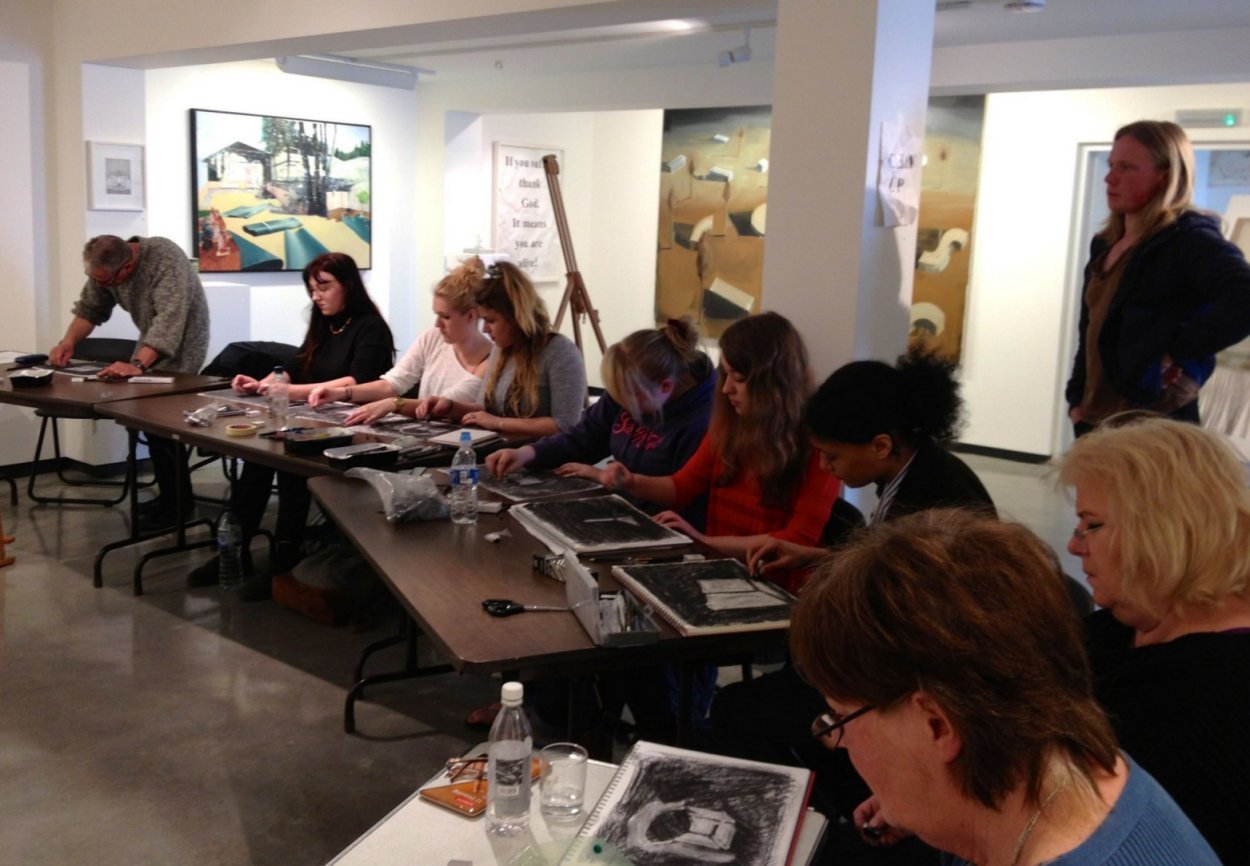
Photo: Edward Crumpton
A rare breed
The White Moose seeks out emerging contemporary artists who fall between commercial art and the publicly funded sector. Milica Lewis tells the story.
Tucked away in the historic town of Barnstaple, North Devon, a former boys school dating from the seventeenth century entered a new era in March 2013 when it reopened as White Moose. Within a year, its founding partners Stella Levy and Julie Gavin have demonstrated the space’s potential as ‘a rare breed of gallery’. Carefully walking the line that divides the commercial and publicly funded art sector by cherry-picking financial opportunities from both, the art space is fiercely independent.
Julie Gavin says: "Given the financial climate, starting any new business is obviously a risk. Especially as our main interest is to discover and nurture new artists, some people have questioned the viability of our plans. Yet we feel being able to work with a clean slate and implement lessons learnt by existing visual art spaces has been a major benefit. We have built partnerships with key universities, relevant businesses and art galleries, as well as developed strong links with the local community and invested in PR and social media to build our wider profile. Establishing an ongoing programme of quality art talks, workshops and other events during exhibitions has also helped with building audiences for our artists and attracting art buyers."
We felt there was an urgent need for a space which provides unique and sustainable developmental opportunities
Julie is not averse to risks. She worked in the city before completing a Masters degree in History of Art and was approached by Devon-based curator Stella Levy with the idea of buying the rundown Moose Hall and developing it into a contemporary art space. Stella Levy says: “The idea for White Moose was born out of our shared passion to actively seek out and nurture the emerging artists most likely to fall into the gap between the commercial art sector and the publicly funded art sector. The former tends to focus predominantly on artists with the greatest selling potential, and the latter’s projects and artists are by necessity selected according to the parameters and priorities of funding bodies. We felt there was an urgent need for a space which provides unique and sustainable developmental opportunities for those artists least likely to fit into either category who have the potential to be ground-breaking precisely because they follow their own lead. It is still early days, but we must be doing something right as Arts Council England have suggested we meet with them to talk about our work. It’s nice to know it happens that way around as well.”
White Moose ended its first year on a high by hosting the national Griffin Art Prize for emerging UK-based artists specifically working in painting and drawing, as one of only three hand-selected galleries in the UK. In its first year, the gallery has also managed to kick-start the careers of hitherto unknown British artists, including Annalie Gabey, a young photographer, and multimedia artist Edward Crumpton.
Milica Lewis is Director of LionArtProjects.
www.lionartprojects.co.uk
www.whitemoose.co.uk
Join the Discussion
You must be logged in to post a comment.